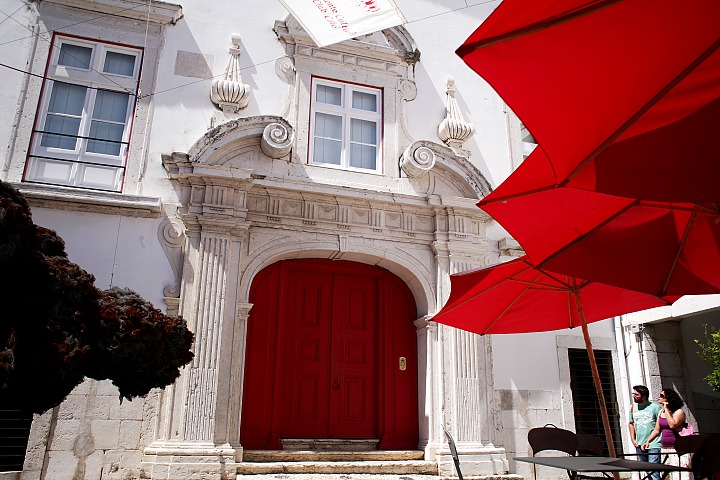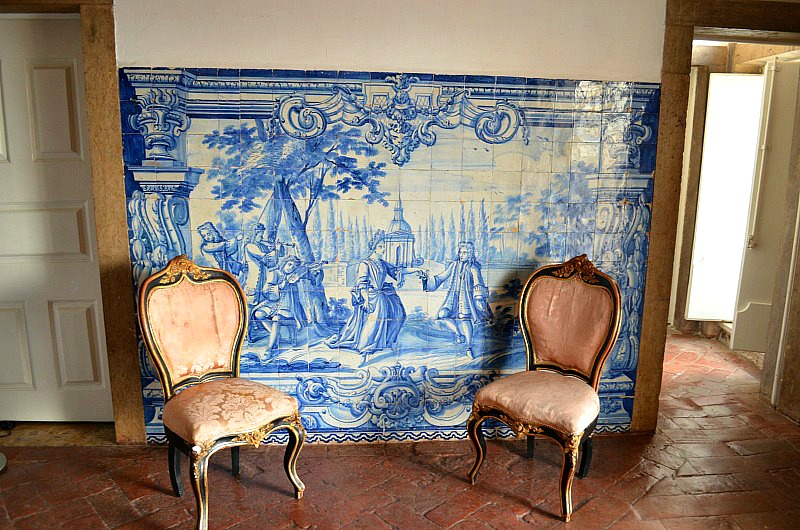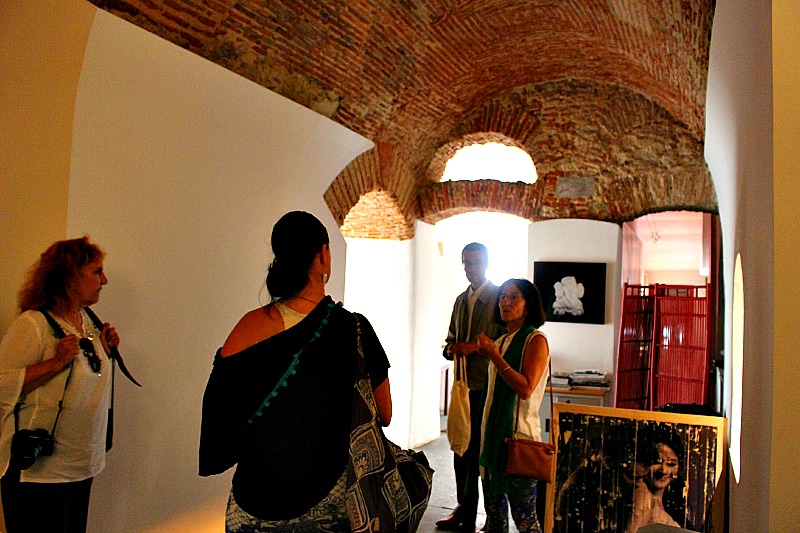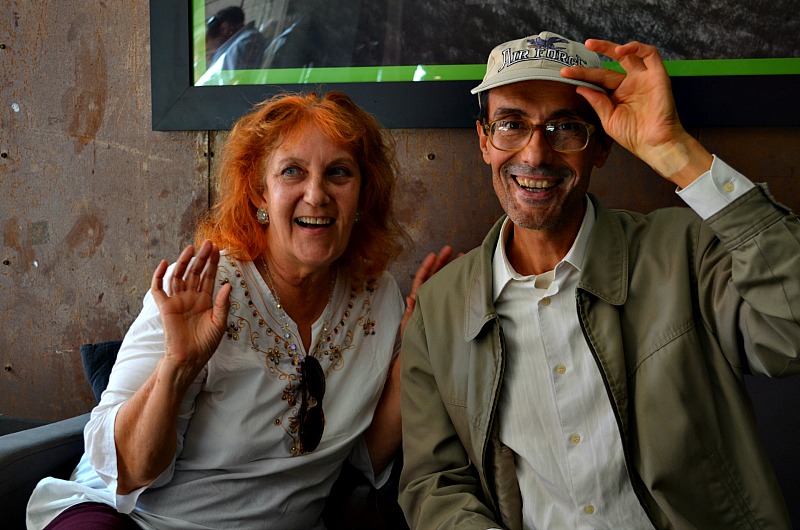“Quem nunca viu Lisboa, não viu coisa boa”
He who has not seen Lisbon has seen nothing…
I meet Lisbon tour guide extraordinaire, Mary H. Goudie online while attempting to sleuth the whereabouts and gather information about a figura de convite (a tile welcoming figure invented in the eighteenth century) photo I found on her Pinterest “Lisbon Tour Designer” page. As it turns out she too became totally intrigued with the history behind this unique Portuguese artistic design innovation. We immediately hit-it-off and she helped confirm some information and seek out more fascinating facts about tiles works I was in the process of researching for my novel-in-progress, Cut From the Earth.The story of an empathetic Portuguese tile maker who risks everything to save slaves and escape The Great Lisbon Earthquake of 1755 that ushers Portugal into a New Age.
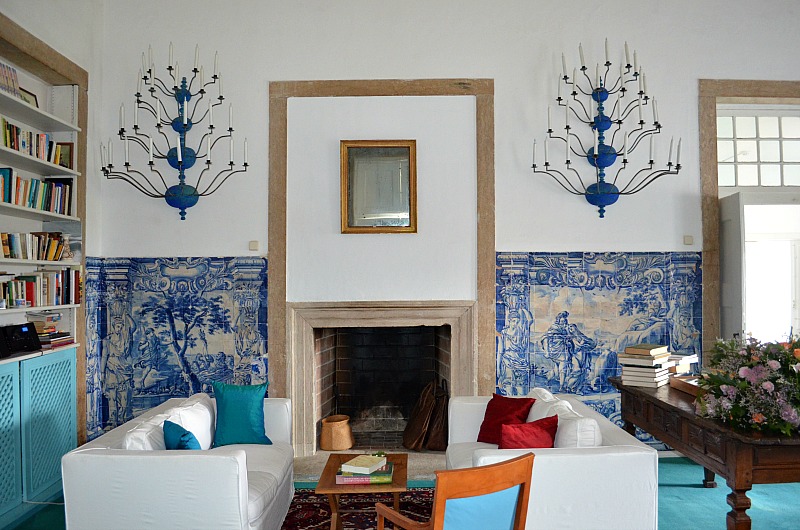
The hotel’s library where I and Maria and Mary exchanged over the artworks of Brazilian contemporary artist Adriana Varejao
September of last year I headed back to Lisbon to do some last minute fact finding and confirmation, along with walking sections of my novel. To reconfirm and again, to feel and to smell and to live my story. And while in Lisbon, I had the great opportunity of meeting in person and being guided by Mary H. Goudie and proprietress Maria Mendonca to view the fifteenth-century clifftop palace, and national monument, the exquisite Palácio Belmonte. Located in the Alfama hillside neighborhood and just down the cobblestone way from Saint George’s Castle, this is no ordinary hotel residence, here is where HRH Charles Prince of Wales and other prominent global and creative personages chose to stay while visiting Lisbon. What is it that draws people to this particular historic ambiance?
The Palácio Belmonte is home to some of the most valuable and well-preserved tile works from the eighteenth century in a public space today, those of Manuel dos Santos, a contemporary of my novel’s protagonist the famous master tile maker known by the monogram PMP. Imagine sleeping and sipping rich Brazilian coffee in the company of some of the greatest tile works from the eighteenth century…For me, I can’t think of any other better way to fully enjoy the exquisiteness of Lisbon and its grand artistic heritage than being in the presence of handcrafted masterly-made Portuguese tile murals.I swooned at the chance to be able to be in intimate proximity with such important works, to almost be able to touch time and the brushstrokes and compositions of one of my main character’s fellow artist works. It was an otherworldly experience to stroll the old halls and haunts of where a great tile maker more than likely walked while possibly overseeing the installment or finished installation of his masterpieces.
Today, it is Maria Mendonca who is charged with the preservation of such a sacred place and the tile panels hidden within the edifice’s earthen walls. With humble graciousness she kindly showed us around, pointing out the old Roman subterranean foundation, walls and alcoves, along with sharing the history of this grand palace. Prior to becoming the Palácio Belmonte, the residence was owned by two elderly sisters who quietly lived with the fanciful decorated walls of room after room of Manuel dos Santos’ works.
If you are visiting Lisbon, I highly recommend booking a tour with “Your Lisbon Guide” Mary H. Goudie and her Lisbon-born husband and your driver, Rui. They will guide you to the secret and special places that only locals know about, and into contact with the heart and soul of this magnificent city and people, along with sharing with you local wine and food favorites.
And hands down, if you can stay at the Palácio Belmonte you are in for one of your most memorable and charming stays anywhere to be found in the world. It is a place like no other…the walls are literally adorned with old world and artistic charm, of a type only found in Portugal. Come and lookout across the terracotta rooftops and down upon the silver Tagus River from the hotel’s open air patios and balconies, walk the stone pathways under ancient arbors, reside in a princely room, read and take coffee in one of the many ambient salons, linger along the marble poolside edge, and retreat into reflective refuge in hidden nooks within the palace and its gardens.This is what awaits you at the Palácio Belmonte.

